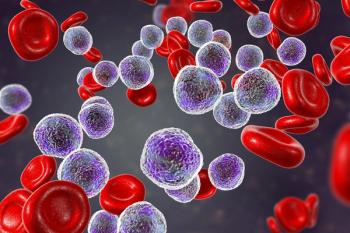
Early-Onset Colorectal Cancer Incidence Has Risen on Global Scale
Data suggest a need for international preventive strategies and educational efforts regarding the increasing incidence of early-onset colorectal cancer.
The rising incidence of early-onset colorectal cancer (CRC) has extended beyond high-income Western countries to areas in Latin America, the Caribbean, Asia, and Eastern Europe, underscoring a need to increase early detection and identify factors associated with disease risks, according to findings from a study published in Lancet Oncology.
In the most recent 5 diagnosis years from 2013 to 2017, early-onset CRC across 23 countries with subnational population-based registries appeared to be highest in Australia (age-standardized incidence rate [ASR], 16.5; 95% CI, 16.1-16.9), Puerto Rico (ASR, 15.2; 95% CI, 14.2-16.2), New Zealand (ASR, 14.8; 95% CI, 14.0-15.6), the US (ASR, 14.8; 95% CI, 14.7-14.9), and South Korea (ASR, 14.3; 95% CI, 14.0-14.5). Locations with the highest incidence rates among older adults included the Netherlands (ASR, 168.4; 95% CI, 166.9-170.0), Denmark (ASR, 158.3; 95% CI, 155.8-160.9), Japan (ASR, 156.0; 95% CI, 154.2-157.8), Spain (ASR, 148.2; 95% CI, 146.0-150.4), and Croatia (ASR, 146.8; 95% CI, 143.9-149.7).
Regarding average annual percentage changes (AAPCs), early-onset CRC incidence remained stable during the last decade in 23 countries while rising in 27 countries. Of note, the highest AAPCs occurred in New Zealand (3.97%; 95% CI, 2.44%-5.52%), Chile (3.96%; 95% CI, 1.25%-6.74%), Puerto Rico (3.81%; 95% CI, 2.68%-4.96%), and England (3.59%; 95% CI, 3.12%-4.06%). This rising trend pertained to younger adults in 14 countries, where the incidence among older adults either decreased or remained stable. Across the 13 countries with increases among both younger and older adults, 10-year AAPCs were larger for younger vs older adults in Chile, Japan, Sweden, the Netherlands, Croatia, and Finland.
Of the 27 countries showing rising early-onset CRC incidence, 14 demonstrated differences in AAPCs based on sex. Specifically, the incidence of early-onset CRC increased more quickly for men in Chile, Puerto Rico, Argentina, Ecuador, Thailand, Sweden, Israel, and Croatia; disease incidence increases were quicker for women in England, Norway, Australia, Turkey, Costa Rica, and Scotland.
“The increase in early-onset [CRC], previously seen predominately in high-income western countries, has now been documented in various economies and regions worldwide, marking it as a global phenomenon. The global reach of this alarming trend calls for innovative tools to prevent and control cancers linked to nutritional attributes, physical inactivity, and excess bodyweight, which might be more challenging to address than the tobacco epidemic,” Hyuna Sung, PhD, senior principal scientist and cancer epidemiologist within Surveillance & Health Equity Science of the American Cancer Society, and coauthors wrote. “There is an urgent need for global initiatives and cross-country partnerships to identify the causes of early-onset [CRC] and implement effective preventive strategies that align with local resources and culture.”
Investigators collected CRC incidence data from the World Health Organization (WHO)–International Agency for Research on Cancer Incidence in Five Continents Plus (CI5plus) database for 50 countries and territories. The analysis included data with national coverage from 27 countries and at least 1 substantial population-based cancer registry for diagnoses from 1943 to 2003 and 2015 to 2017 for 23. Investigators retrieved the Human Development Index 2022 from the United Nations Development Program, which included groupings of very high (>.8), high (0.7 to 0.79), medium (0.55 to 0.69), and low (<.55).
The study’s primary outcomes were the incidence of early-onset CRC for patients between the ages of 25 years and 49 years and late-onset disease for those between the ages of 50 and 74 years. Investigators visualized and quantified temporal trends using joinpoint regression, with differences in AAPCs between groups being calculated with Z-test.
The study authors noted various limitations of their work, including the underrepresentation of countries in Africa, Asia, and small islands where enduring socioeconomic transitions may increase CRC rates. Additionally, 23 of 50 countries included in Ci5plus have subnational coverage, making the findings derived from these data less generalizable to entire countries.
Reference
Sung H, Siegel RL, Laversanne M, et al. Colorectal cancer incidence trends in younger versus older adults: an analysis of population-based cancer registry data. Lancet Oncol. 2025;26(1):51-63. doi:10.1016/S1470-2045(24)00600-4
Newsletter
Stay up to date on recent advances in the multidisciplinary approach to cancer.


















































































